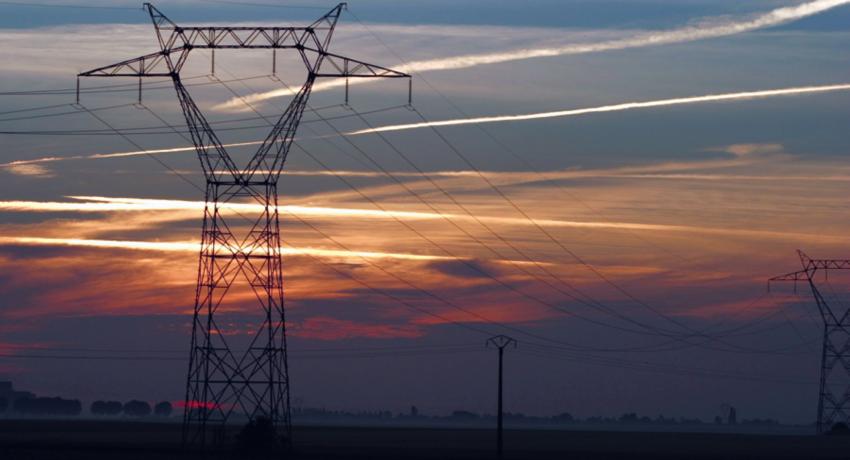You flip a switch in your home, and light fills a dark room.
You plug in your cell phone, and it’s charged in an hour.
You fill a refrigerator with food, and it’s cold or frozen in minutes.
You set the thermostat to 70, and your house is cool in the summer, warm in the winter.
It’s electricity that makes all this possible. We rely on it 24/7. Most of us probably take it for granted because it’s always there, powering our home, our business, our life. It’s invisible so we don’t notice it until it’s not there—and the power goes out, and our home, our business, our life is disrupted.
Providing reliable electricity has been a top priority for Ohio’s electric cooperatives since they began. But across the country, the electric grid has become less reliable because there are fewer power plants generating the supply of electricity needed to meet the growing demand, making it challenging for power generators to provide the supply of electricity needed to meet growing demand, as more electric cars hit the road. The challenges the power generators and the distributors of power (your electric cooperative) face are outside their control.
Strict government regulations and EPA rules have forced long-time power plants to close earlier than expected. Ohio had 21 coal plants in 2009—today only 4 exist. Renewable power sources like solar and wind have come online, but they are intermittent, and not as reliable 24/7, 365 days a year.
Buckeye Power, which generates power for all of Ohio’s electric cooperatives, utilizes an all-of-the-above approach to power generation, using primarily coal and natural gas, but also hydropower, biogas, wind, and solar.
New rules proposed by the EPA earlier this year are so restrictive, if put into effect, would likely cause even more coal and natural gas plants to close prematurely and put reliability further at risk.
Ohio’s Electric Cooperatives and Buckeye Power President and CEO Pat O’Loughlin has testified twice on Capitol Hill. In June 2023, he spoke before the House Energy and Commerce Committee, Subcommittee on Environment, Manufacturing and Critical Materials.
“Throughout the country we are already experiencing power supply emergencies anytime we experience an extreme weather event,” said Pat O’Loughlin. “As someone who has worked in the electric power industry for decades, I know that despite what EPA has claimed, this rule will in fact will have a serious negative impact on the reliability of our electric system and will result in a dramatic increase in costs to Ohio’s electric cooperative members. It is imperative that EPA change course.”
O’Loughlin was one of many who’s testimony raised grave concerns over the EPAs new rules around 90% carbon capture technology by 2030 at coal and natural gas plant. Some cited the rules posed a public health crisis.
“Energy is foundational to our way of life in America. It is because of our abundant and reliable energy resources that we have led the way in lifting people out of poverty, raising the standard of living, and reducing emissions,” said Chairs Cathy Rodgers and Bill Johnson. “President Biden’s rush-to-green, so-called climate agenda is reversing this progress by shuttering reliable baseload power sources, raising costs, and threatening energy blackouts. This hearing will explore how the Environmental Protection Agency’s latest proposed power plant rules could make these problems worse and add new costly burdens to important energy sources like natural gas, which is responsible for a significant portion of emission reductions. We look forward to hearing from expert witnesses on why the EPA should abandon these dangerous efforts and focus instead on ensuring reliable and affordable energy for our communities across the nation.”
The organization that monitors the nation’s grid reliability, the North American Electric Reliability Corporation (NERC), issued a 2023 summer assessment stating two-thirds of the country, those living west of the Mississippi River, were at risk for rolling blackouts in the summer.
In November 2023, NERC released its Winter Assessment, stating half of the eastern United States and Canada was at elevated risk for blackouts this winter during extreme cold temperatures, when power demand would exceed power supply.
In the winter of 2022, blackouts did occur in nine states south of Ohio during Winter Storm Elliott. Ohio came within minutes of forced outages on Christmas Day as demand for power nearly exceeded available supply when temperatures dipped into single digits.
Resources to generate power in the region have continued to decline over the past year, and the newly released 2023 risk assessment confirms that.
The NERC report cited a diminishing fleet of dispatchable, always available power generation and static growth of gas plants as the cause of the risk, as well as the challenges gas plants experience during extreme cold temperatures.
If new proposed EPA rules requiring carbon capture technology for coal and natural gas plants goes into effect in the coming years, more power plants will likely retire early due to cost constraints, and the risk of blackouts will grow higher.
How can you help?
Conserve energy on hottest, coldest days
• Seal windows, doors, any opening
• Insulate your home
• Avoid doing laundry during hottest, coldest hours
• Unplug appliances not being used
• Replace incandescent bulbs with LED bulbs
Support lawmakers who make reliable electricity a priority.






